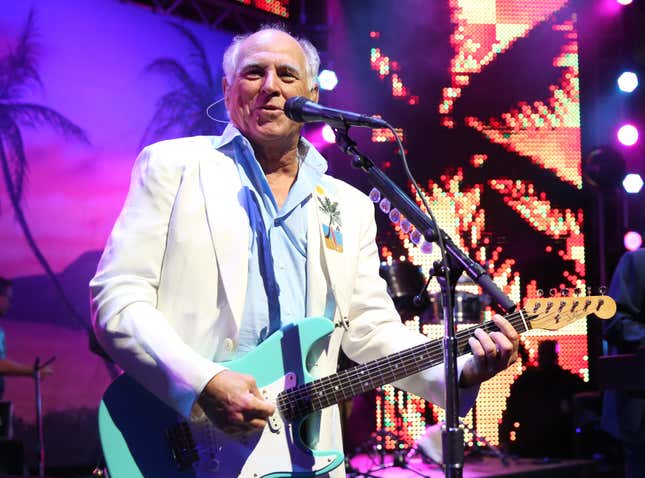This story is part of What Happens Next, our complete guide to understanding the future. Read more predictions about the Future of Aging.
To look at Albert is to stare the untapped possibilities of later life in the face. He is physically fit, lives on his own, and, as a member of Massachusetts Institute of Technology AgeLab’s Lifestyle Leaders group, he works with students and researchers seeking to chart the future of life after 85.
Unfortunately, however, his time at the Lab only occupies a single day of his week. He is long since retired, lost his wife years ago, and finds it a constant struggle to fill his days with more than television. Three days a week are accounted for with activities, he told me, “but there are four more days.”
He looked down, exhaling softly. “I just never realized just how much time there would be”.
“Old age” as we currently know it is just a fictional story we tell ourselves. As I argue in The Longevity Economy, we’ve inherited a narrative of what is normal in later life: that old age is a time to relax, rest, and retire. These are fine pursuits, to be sure, but they don’t necessarily add up to a full life.
That story isn’t an immutable law of nature. It was rather written by humans surprisingly recently to serve the purpose of an economy that was built around manual labor. In this narrative, a ready and endless supply of youth was necessary to keep factories humming and farms productive. Despite changes in industry, this outdated story continues in our minds today, perpetuating a mental image of a time when older workers need to simply retire—or, more to the point, get out of the way to make room for countless young people eager to take their place at the head of the line.
But the physical capacity of an individual worker is far less important in today’s knowledge economy. Even manufacturing, farming, and construction environments are increasingly automated, making physical labor less demanding at any age. As the work has changed, so too should our outdated story of old age.
If it was written once, it can be rewritten again. In fact, it must be rewritten, because it is now hamstringing what is possible for up to a third of our adult lives. In most industrialized countries, the 85-plus comprise the fastest-growing part of the population. If you assume a typical retirement starts between ages 60 and 65, and you live to 85 or more, that’s two or more decades of passivity.
That’s a lot of time to fill. In the United States, adults over age 65 report that they spend more time pursuing leisure activities than any other age group. While that may sound relaxing, troublingly, most leisure time for older people consists of solitary activities, such as reading or watching television.
Add to that the fact that as many as half of older people in some nations are likely to live alone, and you have a recipe for social isolation and loneliness. This takes both a mental and physical toll; research suggests that social isolation may have the deleterious physical impact of smoking a pack of cigarettes a day.
So instead of solely focusing the future of aging on care and compassion, let’s address an overlooked element that could have an outsized impact: the question of fun.
Why can’t it be all fun and games?
For businesses seeking a piece of the fast-growing longevity economy, reinventing the future of fun in old age is perhaps the most promising option of all. After all, today’s older adults have more money and education than any previous generation of older adults—and, of course, lots and lots of time.
Our notions of permissible fun remain stuck in the 1950s, however, inextricably coupled with the norm of retirement not just from work, but from society at large. But it doesn’t have to be that way. The market for new sources of socially connected fun in the longevity economy could provide lucrative business opportunities for the groups serving it up, and, more importantly, crucial social benefits for the fun-havers themselves.
Beyond bingo: group exercise

Exercise has been described as the wonder drug for many physical and mental health conditions. Organizations are therefore investing in group exercise activities for older adults.
In the United Kingdom, Age UK offers a host of innovative, age-adapted opportunities, such as walking football matches and Zumba Gold. Singapore’s Health Promotion Board sponsors a group exercise program named Sundays@ThePark: The mass workouts are held at 50 parks across Singapore, engaging older adults in intergenerational exercise ranging from kickboxing to stretching set to Korean pop songs. As one 66 year-old said in a Singapore Ministry of Health interview, while the program is a convenient way to stay fit, “the sessions have also allowed me to get to know my neighbors and make new friends.”
In this way, group exercise has social benefits, too. In the US, a recent MIT AgeLab study showed that membership in group exercise programs had direct physical activity and health benefits (as predicted), but also reduced social isolation. For example, an older woman who had been a longtime member of Tivity Health’s Silver Sneakers program, which engages millions of older adults in group exercise, described the group as a social lifeline. Once, when she became ill for a protracted period and unable to attend her group exercises, her “exercise buddies” regularly visited her at home and kept her refrigerator stocked with food.
Here come the silver gamers

That said, disability or the absence of transportation can relegate many older adults to lives of solitude in their homes. For people who spend most of their day in chairs of one sort or another, it’s essential to build routes to social fun that are accessible from a seated position.
Here, the rise of virtual reality headsets holds real promise. Take for instance the startup Rendever, which offers VR tours to such destinations as the streets of Paris and even up to the highest elevations of Macchu Picchu. Importantly, users often “travel” in groups, which provides a social outlet for those physically unable to socialize in that way.
Demonstration studies conducted in senior housing settings, such as a pilot program at Benchmark Senior Living, have shown that VR can brighten a person’s day with a novel experience and spark spirited chatter among fellow travelers in a guided virtual tour.
A new generation of older gamers—called silver gamers—has also arrived. As 84-year-old Doris Oram told The Guardian, her favorite way to wind down in the evening is by playing video games on her Kindle Fire. And in community centers and senior housing homes, Nintendo Wii and Microsoft Xbox consoles have made video golf and bowling not just a way of having fun, but building camaraderie: Today, the National Senior League collects and reports schedules for older-adult Wii Bowling leagues across the United States.
Designing spaces and places
Making fun isn’t just a matter of the games and devices involved, but also the places and spaces surrounding them. Although millennials have the reputation for migrating to places that are all about experiences—restaurants that contain art galleries, banks that double as coffee shops, and retailers that teach as much as they sell products—older adults weigh similar considerations when they think about where they want to live. After all, perhaps the oldest source of fun and engaging with others is a simple walk.
Innovative real estate developers, such as Tavistock or The Pinehills, are experimenting with promoting chance collisions and active social lives by populating their developments not just with storefronts, but also strategically placed lawn games, micro-parks, and even “village” centers. This encourages people to walk around and use alternative means of transport, such as golf cart rides and autonomous vehicles. For the retirement community arms of such developments, the goal is a less retiring vision of retirement.

Another vision of where fun meets real-estate development is Jimmy Buffett’s 55+ community Latitude Margaritaville. Singer, songwriter, entertainer, and baby boomer Jimmy Buffett has made a career preaching fun to his fans known widely as Parrotheads. (Full disclosure—this author is a Buffett devotee.) Buffett is now translating the imagery of beaches, boats and bars into active adult communities in Florida and South Carolina.
His business partner, John Cohlan, describes Latitude Margaritaville as “a bit like going back to summer camp—where old friends, new friends, family, numerous activities, state-of-the-art amenities, quality food and beverages and great music come together. Simply put, it’s fun.”
* * *
The future of aging is not about older people: It’s about all of us. As you look toward your own future, it’s worth asking yourself what you see.
It’s worth thinking about how young people can build a world where more will be possible in their later years: more social connections, more interaction, and more fun. By investing in such uncharted aspects of the longevity economy now, we may pave the way for ourselves to live longer, better—and perhaps with a smile.
This story is part of What Happens Next, our complete guide to understanding the future. Read more predictions about the Future of Aging.
